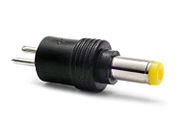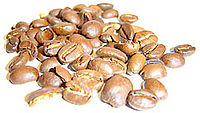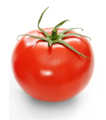User:OrenBochman/Taking Pictures
Photographs and other images can contribute substantially to an article. Here are some hints on how to take photographs for Commons with a view that they be useful for Wikipedia or other Wikimedia projects.
- Pay attention to the vertical/horizontal orientation of the frame in relationship to the subject so the picture won't be crooked.
- Have good light on the main subject of the photo (preferably daylight) and try to keep the light source behind the photographer.
- Put the subject in the center of the picture. If the subject is a person, avoid cutting off any body parts with the edge of the frame, particularly arms and head.
- For a deeper discussion, see Composition (visual arts)
Cameras
[edit]

You don't have to spend much money; most cheap compact cameras can do good work. On the other hand, a high-megapixel expensive camera can be useful for several kinds of photography, but megapixels have little relevance to Wikiphotography. That's because the main purpose of Commons photos is to illustrate Wikipedia articles, and readers of those articles seldom see a whole megapixel. So, unless your pictures will have other purposes, you can save your money. Also, in limited light a greater number of megapixels can make the picture worse, because the camera sensor must divide the incoming light among more pixels, leading to a noisy picture.
Similarly, a large, expensive dSLR is very versatile in the hands of a photographer who has carefully studied its complex manual controls. If you haven't, you must use it in automated mode, which limits its advantages over ordinary cameras intended for casual use. Ruggedness, ease of use and portability are more important when you are traveling abroad, or merely around your neighborhood, rural district or metropolitan area, taking pictures of places for which Wikipedia has articles without illustrations.
Camera phones can work well in daylight and many can geotag their pictures automatically. If you plan to buy a separate camera, you can also take a look at this list of recommended cameras. If you know of a particular camera model you would recommend to others, please add it to that list.
Macro closeups of objects
[edit]- Use macro mode, but zoom in all the way, too. This puts more of the object in focus and increases resolution.
- Tearing a plain paper folder apart makes a nice floor and backdrop for the object. It's cheap and easy to make, and the crease is subtler than the line between separate pieces of paper.
- Putting white paper on the opposite side of the object from the lamp helps diffuse the shadows and make the lighting more even.
- Using the Levels... tool in the GIMP helps get that nice pure white background. Pick a darker area of the white background and set it as your white point.

 .
.You can take photos of small objects by placing them on a kitchen table, coffee table, or anything else that's at a convenient height. A sheet of heavy paper, available at department stores, art-supply houses and other places, can serve as the background, eliminating distracting details. You can tape it to a wall or another piece of furniture, and give it a gentle curve as shown in the illustration.
You can do this outdoors or indoors. Setting up outdoors, out of direct sunlight, beneath a roof or overhang to give the light some directionality, results in even lighting with soft, open shadows, giving clear detail. You can include a neutral gray or white card to use for color balance, placing it in the same kind of light as the subject but far enough away that you can crop it out of the file. Color balancing to make that card neutral can yield accurate color.
Take great Encyclopedic pictures
[edit]It is a good idea to place a backdrop, i.e. a piece of monochromatic cloth or paper, which has a high level of contrast with the subject. For example, a black backdrop would be ideal for a picure of a snowflake but a yellow or black backdrop would not suit a picture of a bee; a white backdrop may be preferable.
The use of a backlight, i.e a source of light behind the subject, can prevent harsh shadows or otherwise be helpful.
Where the use of a backdrop is impractical, e.g. a photograph of a tree or building, many photographers focus the lens on the subject and allow a blurred background.. This shallow field technique can prevent the background from distracting the viewer.
The low cost of digital photography allows taking many pictures of the same subject with different camera settings and viewing angles, and picking the best later. Exposure bracketing can be particularly useful, producing images that may be combined to form a one image using software such as Adobe Photoshop. The resulting HDR image can show high detail throughout the entire image, including areas covered by shadows and bright or shiny objects that reflect a lot of light.
Add helpful links here to expand this section:
- The fr.Wikipedia Photographic Workshop's recommendations (basic French)
- This amazing gallery of aquatic animals (encyclopedic photography)
- What a common Coolpix 4 megapixel camera can do when smartly used.
|
Naming conventions
[edit]When you upload your image, please add a suffix indicating the view or perspective. The possibilities are : a/ -global ; b/ -top , -bottom , -left , -right , -front , -back .
Also, the image name may be more accurately labeled if a further description of the perspective or view is added of the photo or number in a sequence like this: Image's subject-view code.extension. Examples: Tomato-front.jpg, Tomato-front-02.jpg if several are available, or Tomato-left-tag.jpg if your also add alpha-numeric tags.
For the subject name, take simple English names. The photo subject's Wikipedia entry can give to you the perfect name to use.
- Examples
-
Tomato-global.png:
global view -
Tomato-top.png:
top view -
Tomato-front.png:
view from the font. -
Tomato-cut vertical.png
-
Tomato-cut horizontal.png
Editing
[edit]Most cameras come with an elementary program for cropping, rotating, correcting color, and otherwise improving your pictures. Most of these programs also have features for managing a large number of pictures in a regular workflow, and for sharing via the manufacturer's Web site. You can download similar free programs such as Picasa with somewhat more advanced features or versatilitiy. Programs with similar capabilities, such as Photoshop Elements, are available for sale. GIMP, another free download, has much more advanced editing capabilities but no organizing features. Professional photographers mostly prefer the similarly powerful but expensive Adobe Photoshop, for which many books are available.
Cropping is especially useful for avoiding crooked lines. You need to hold the camera strictly horizontal when taking the picture, if you want to show the vertical lines properly, but if you are photographing buildings or other large objects from the ground, the lower half of the picture then will only show the ground. Don't worry. If you have chosen a sufficient solution for this picture you just can crop it to that part you want to show, and then you get both, a photograph only showing your object and a picture without crooked lines.
See also
[edit]- Commons:Quality images
- :Commons:Category:Graphics abilities
- W:Wikipedia:Photograph your hometown
- Commons:Commons:Macro
External links
[edit]- Shoot to Sell: Taking Better Photos for eBay, Etsy & Instructables - for taking macro photos
- How To: DIY $10 Macro Photo Studio - a light diffuser box for very little money








